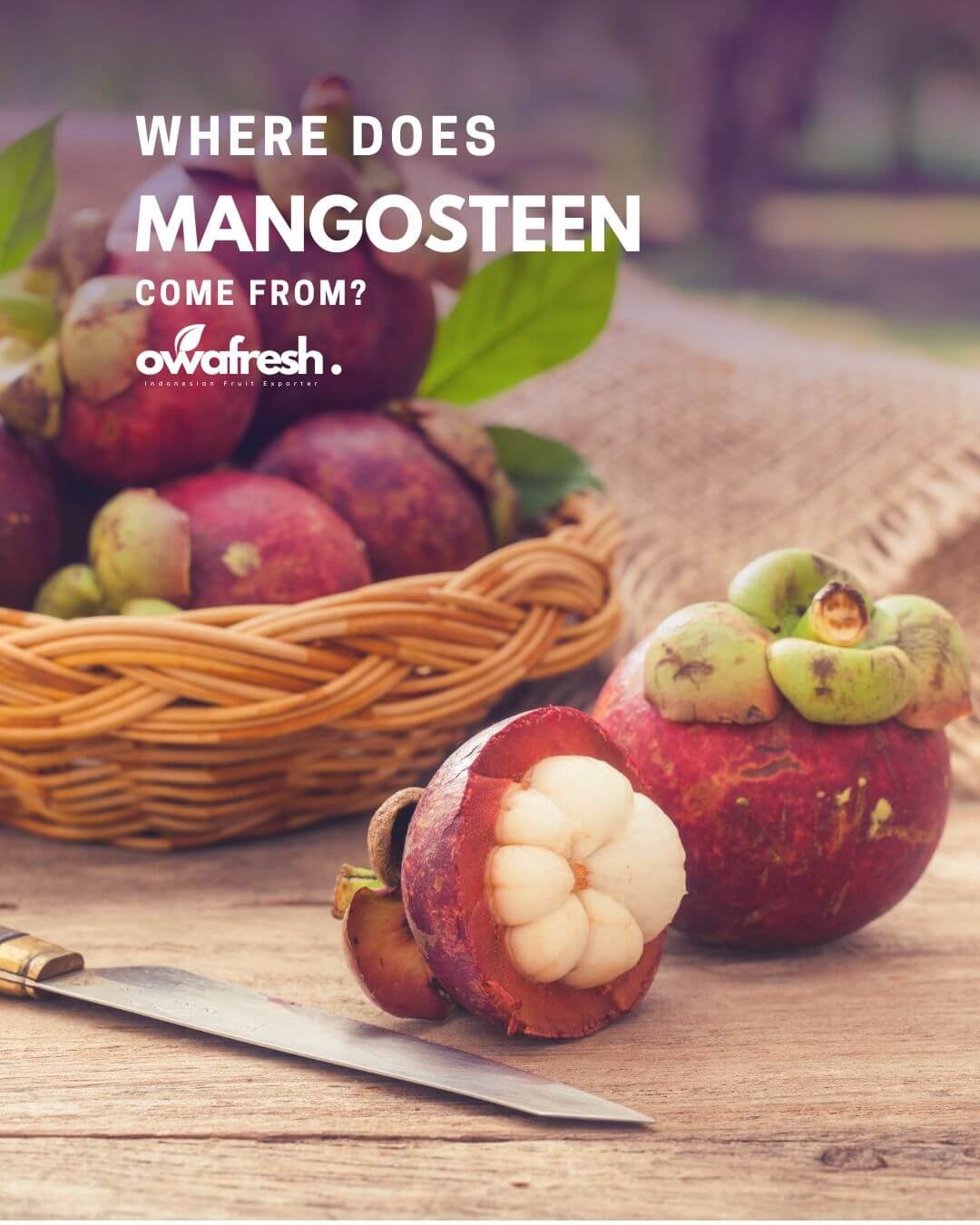
Mangosteen has gained a reputation worldwide as one of the sweetest tropical fruits with a refreshing taste. Despite its growing popularity, many still wonder, Where does mangosteen come from, and why Indonesia remains one of the world’s top sources?
Understanding its roots helps buyers and fruit lovers appreciate why this fruit continues to attract global demand.
Where Is Mangosteen From?
The story of mangosteen starts deep in the lush rainforests of Southeast Asia. This region has provided the perfect environment for mangosteen trees for centuries:
a. Native Regions of Mangosteen
When asked where mangosteen is from, the answer lies mainly in the tropical areas of Indonesia, Malaysia, Thailand, and the Philippines. These countries have the right balance of warmth, humidity, and fertile soil that mangosteen trees need to grow strong and healthy.
b. Ideal Climate and Soil
Mangosteen trees thrive in regions with warm temperatures, steady rainfall and high humidity. The deep, well-drained soil keeps roots healthy and provides the minerals needed for the tree to bear its thick-skinned purple fruits.
How Mangosteen Spread Globally
The appeal of mangosteen has spread far beyond its native lands thanks to trade and exploration over the centuries:
a. Early Cultivation Outside Southeast Asia
Early traders carried mangosteen seeds to other tropical regions such as India, Sri Lanka, parts of the Caribbean, and even Hawaii. While small orchards have appeared in these areas, large-scale growing remains limited.
b. Limited Production Elsewhere
Outside its original habitat, mangosteen struggles to thrive. Trees take up to ten years to mature and need specific climate conditions to bear quality fruit. Many farmers find it challenging to reproduce Southeast Asia’s perfect balance of warmth and rain.
Why Indonesia Leads in Mangosteen Production
Among the countries known for mangosteen, Indonesia continues to stand out for both volume and quality.
a. Rich Tropical Regions
Islands across Indonesia provide the rich soil and warm climate that mangosteen needs. Regions like West Java, East Java, and parts of Sumatra are home to thriving mangosteen farms that produce fresh fruit season after season.
b. Reliable Supply for Export
Many farmers in Indonesia still use traditional methods combined with modern sorting and packing. This ensures fruit is picked at the right time, handled carefully and shipped under strict standards for international buyers.
Global Demand for Indonesian Mangosteen
Beyond local markets, mangosteen from Indonesia finds its way to buyers across Asia, the Middle East and Europe.
a. Consistent Quality and Certifications
Fruit from Indonesia is valued for its clean rind, sweet taste, and fresh green stems. Exporters back every shipment with certifications such as Phytosanitary Certificates and Certificates of Origin, which help meet requirements for markets like China and the UAE.
b. Mangosteen from Indonesia
For importers and wholesalers seeking a trusted supply of fresh mangosteen, mangosteen Indonesia remains one of the best choices. The combination of fertile growing regions and experienced handling keeps Indonesia at the top of the market.
Choosing a Trusted Mangosteen Supplier
Finding the right partner makes sourcing mangosteen much easier for international buyers. Working with a dedicated mangosteen supplier like OwaFresh brings confidence to every order, from packing to final delivery.
OwaFresh connects buyers directly to Indonesian growers and oversees every step from orchard to port. This focus on careful harvest and secure shipping helps maintain the fruit’s taste and freshness during transport.
Conclusion
For anyone curious about where mangosteen comes from, the answer leads back to Southeast Asia’s tropical forests, with Indonesia as one of the strongest producers. The country’s natural conditions, farming traditions, and reliable export practices make Indonesian mangosteen a favorite among buyers worldwide. Partnering with OwaFresh ensures premium quality mangosteen from trusted farms reaches new markets in top condition.
Read also: What Happens if You Eat Too Much Mangosteen and How to Pick Ripe Mangosteen for Export or Retail


